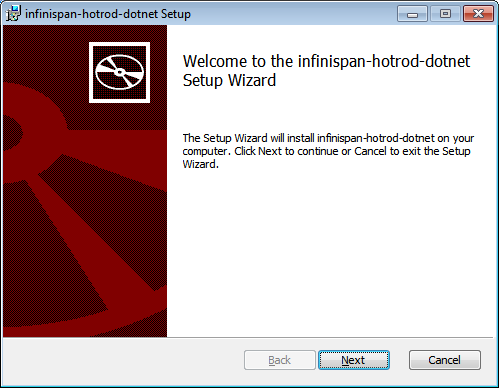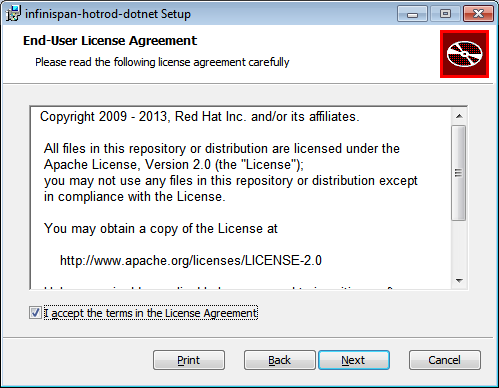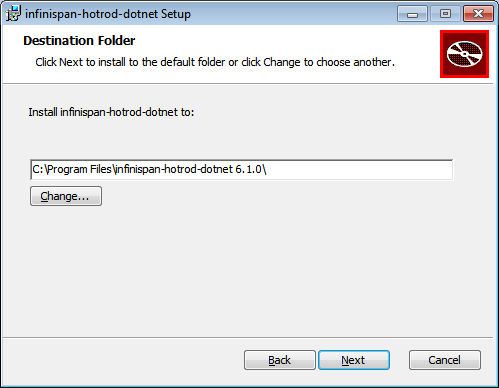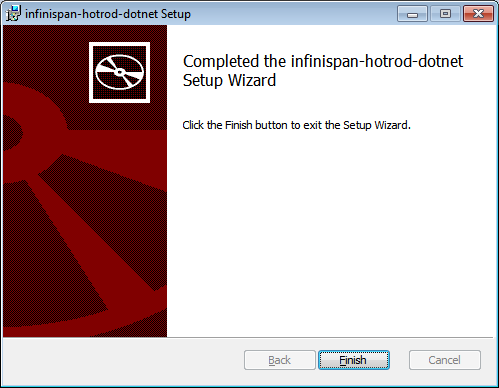Este conteúdo não está disponível no idioma selecionado.
11.8. Hot Rod C# Client
11.8.1. Hot Rod C# Client Download and Installation
jboss-datagrid-<version>-hotrod-dotnet-client.msi packed for download with Red Hat JBoss Data Grid . To install the Hot Rod C# client, execute the following instructions.
Procedure 11.2. Installing the Hot Rod C# Client
- As an administrator, navigate to the location where the Hot Rod C# .msi file is downloaded. Run the .msi file to launch the windows installer and then click .
Figure 11.1. Hot Rod C# Client Setup Welcome
- Review the end-user license agreement. Select the I accept the terms in the License Agreement check box and then click .
Figure 11.2. Hot Rod C# Client End-User License Agreement
- To change the default directory, click or click to install in the default directory.
Figure 11.3. Hot Rod C# Client Destination Folder
- Click to complete the Hot Rod C# client installation.
Figure 11.4. Hot Rod C# Client Setup Completion
11.8.2. Hot Rod C# Client Configuration
The following example shows how to use the ConfigurationBuilder to configure a RemoteCacheManager.
Example 11.9. C# configuration
11.8.3. Hot Rod C# Client API
RemoteCacheManager is a starting point to obtain a reference to a RemoteCache.
Example 11.10.
11.8.4. String Marshaller for Interoperability
CompatibilityMarshaller to the Marshaller() method of the ConfigurationBuilder object similar to this:
Note
HotRodClientException being thrown.



